The beginning of April 2009 was a pretty miserable time in the British car industry. The Lehman Brothers bank collapse in 2008 had triggered financial meltdown on a global scale. Other financial institutions were at risk of collapse and car buyers – both fleets and private – kept their chequebooks in their pockets.
As a result, car sales plummeted for a straight year. During the first three months of 2009, new car registrations were down by 30%. Total UK vehicle production was 57% lower than the year before. Showrooms were deserted and pens were poised over P45s.
No one could have predicted that just a month later – 10 years ago this week – several dealers would be forced to install ticketing systems to manage the crowds in showrooms.
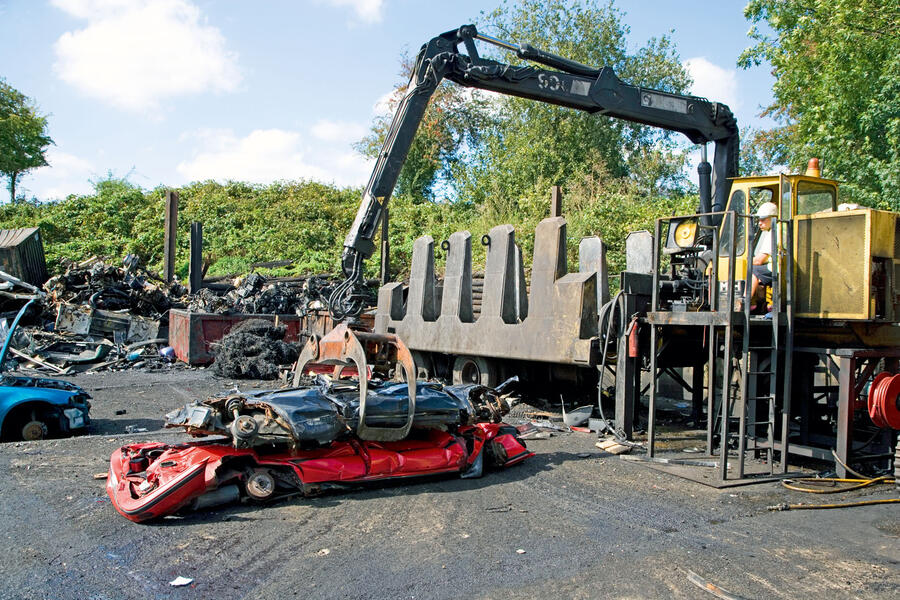
The difference was scrappage, a scheme that was designed to keep the car industry afloat and get drivers to swap into less polluting, safer cars. It was controversial at the time and still causes resentment today. It propelled some manufacturers to stardom and sent nearly 400,000 cars, including some bona fide classics, to the crusher.
How did it come about? And what effect has the scheme had on the market since?
Convincing the government
The main proponent of the scheme was the Society of Motor Manufacturers and Traders, whose chief executive at the time was Paul Everitt. “Car sales were an important barometer of the economy and, month after month, registrations were going down,” he says. “There was a strong political will in Gordon Brown’s government to do something which would change the ‘weather’. The news talked of an impending financial collapse, and no one knew where the bottom was.”
Consequently, there were meetings organised between industry CEOs, the SMMT and the government’s business secretary, Peter Mandelson. The industry pointed to the successful scrappage scheme in Germany and put a case for how it could work here in the UK.
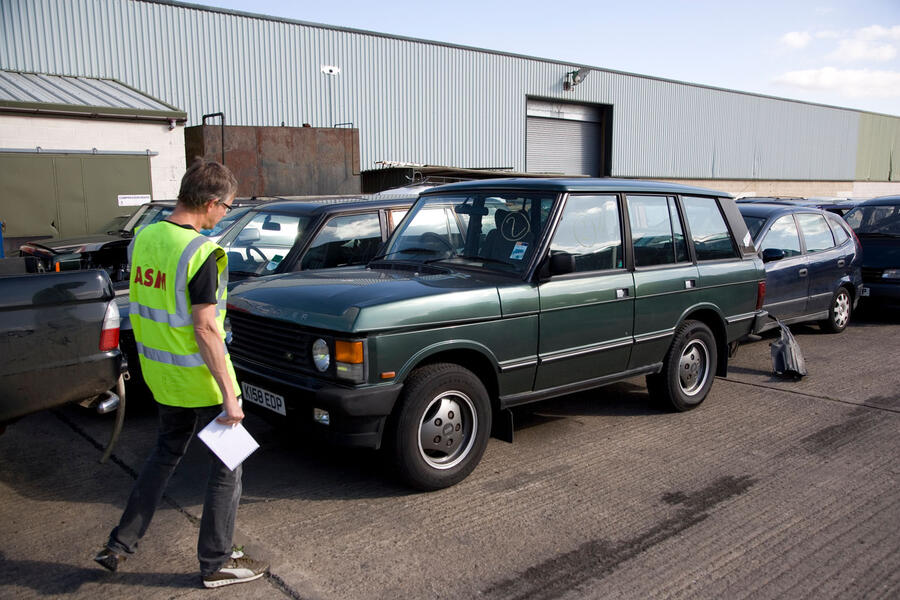
One of the industry executives Everitt took with him was Bill Parfitt, then chairman and managing director of GM in the UK. Parfitt recalls: “Mandelson was polite but not convinced at first. So I came at it from the manufacturing point of view as the slump was really hitting the component suppliers. I was nursing about six or seven of them at the time and if one went down it would have been a major problem for everybody because we’d have had to stop production and re-engineer the parts using a different supplier. That can take months.
“Mandelson argued that scrappage would only suck in imports of cheaper small cars and people like Kia and Hyundai would gain a foothold in the market. He was right, of course, but I showed the upside with a series of sums showing what they would get from VAT and road fund licence, and also what would happen if a component company went bankrupt taking other companies with them. It was the supplier argument which won the day.”
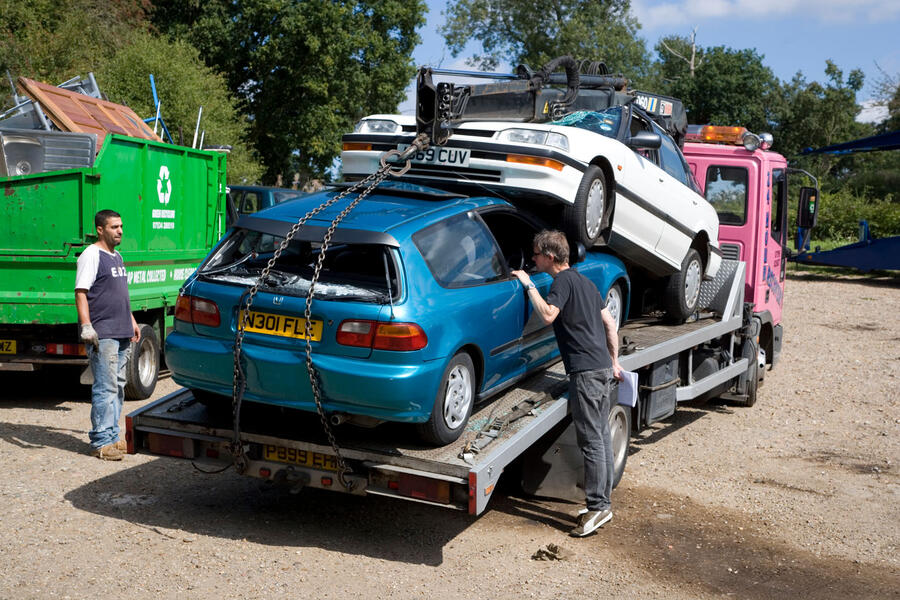
The scheme was finally announced in chancellor Alistair Darling’s budget statement, and although it had been widely expected, the actual details had been a closely guarded secret. The deal Darling dished up was not as generous as the German government’s as it gave a £2000 discount to the consumer but only half would come from the government – the other £1000 had to be given up by the manufacturer.
Parfitt also worked out the mechanism that would ensure no one could cheat the system. Automated checks between government departments made sure the scrapped cars had a valid MOT, had been owned by the purchaser for more than 12 months and – crucially – were issued with a certificate of destruction to ensure they never returned to the road. Without it, the dealer wouldn’t get his money.
This caused a flurry of calculator tapping in car company HQs as finance directors attempted to see if they could still make a profit.
Showroom boom
One maker that was prepared was Hyundai, whose managing director at the time was Tony Whitehorn. He explains: “At the beginning of 2009, we heard that scrappage was likely so I asked my German colleagues for advice, as they’d done really well with it. They said you needed stock. So I took a risk and ordered 7000 Hyundai i10s – I usually ordered 1000 a month. The factory phoned up and assumed it was a mistake.”

When scrappage was announced, Whitehorn was ready: “We had it all pre-planned based on several likely scrappage scenarios: price lists, press releases, everything. All the media wanted to talk about it and customers wanted to place orders, but none of our rivals were ready so they were turning down TV interview requests and customers. We took one of our ready-made plans off the shelf and we scooped up the buyers and got all the publicity.”
Hyundai’s headline was that an i10 Classic could be had for £4995 after the scrappage discount, or £85 a month on finance. Hyundai sold all its first shipment before the boat had even docked. By the end of 2009, the brand had sold 39,000 cars under the scheme, more than doubling its 2008 sales numbers – proving Mandelson’s prediction right.
The effect on Hyundai’s dealers was even more pronounced. Michael Nobes was managing director of Richmond Hyundai with two showrooms on the south coast. He became Britain’s biggest scrappage dealer and issued press releases proclaiming himself the ‘King of Scrappage’. He explains: “There were queues running the length of the showroom. I’ve never seen anything like it before or since. We had girls with clipboards who would answer general questions and only when a customer was ready to order were they allowed to go to the salesman to sign the paperwork.”

Other dealers had to introduce delicatessen-style ticketing systems to manage the queues. Hyundai eventually ran out of cars and Nobes had to return 500 deposits at the end of the scheme as he couldn’t get stock.
While Hyundai and most other rivals had to wait for its cars to arrive from abroad, domestic manufacturers such as Nissan and Vauxhall could get their British-built cars to market much faster. “It certainly worked very well for us,” says Parfitt. “Within three weeks, my production was better at Ellesmere Port on Vauxhall Astras and the suppliers were out of the danger zone.”
Nissan made the most of its ‘Made in Britain’ credentials for the Nissan Micra and Nissan Qashqai, sending a Micra wrapped in Union flag decals to every dealership. The company’s managing director at the time was Paul Willcox. “The Sunderland factory was really flexible, so they could quite quickly flip production, especially as demand was falling elsewhere in Europe,” he says. “We could get as much stock as we needed, really, so we went after it aggressively.”
Premium backlash
Not everyone was so keen on the scheme, especially those who didn’t have a low-cost hatchback to sell. Parfitt recalls one spiky meeting: “The guys from Mercedes, Porsche, BMW and a few others were on the hook from their lords and masters abroad to make sure they were dipping their bread in this gravy as well. So they asked to come to one of our Mandelson meetings and put their case. They came in and Mandelson asked them how many vehicles they made in the UK. They said none, so he suggested they address their enquiries to the government of Germany. He really would have liked to have restricted the scheme to British-made cars, but he knew that wouldn’t be allowed.”
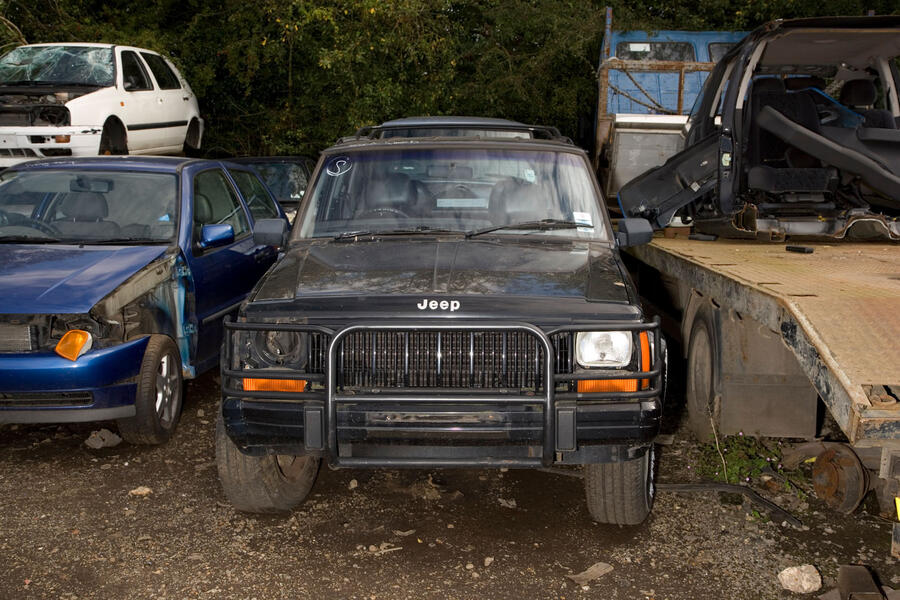
It wasn’t just the luxury brands that failed to embrace the scheme. Willcox recalls: “The behaviour of some of the manufacturers was odd – they were unsure what to do, maybe because they didn’t have the profit margin to give away, or had to order production three or four months in advance and had missed the boat – literally. The ones who were successful grasped the opportunity rather than overanalysing it and losing momentum.”
Other makers were accused of sneaking in list price rises to cover the cost of their contribution. An investigation by What Car? in 2010 found several sharp increases that more than wiped out the scrappage savings, such as a “staggering hike” of 32.6% for a Ford Fiesta. Ford claimed it was due to exchange rate fluctuations.
Parfitt explains: “There’s not a huge amount of profit in a new car, but generally you keep a bit of margin back to give low-rate finance, free servicing or some other incentive. You couldn’t do that and give the £1000 for scrappage, so some people had to move the money about a bit.”
Extending the success
By the summer, it was clear that the scheme had been a success, with applications peaking at 50,000 for the month of June. The SMMT and Parfitt went back to the government and suggested they might want to grant an extension. Parfitt says: “We asked Mandelson and he said no, there was little chance of that. And then, without telling any of us, he announced it at the Labour Party conference! I didn’t blame him.” The extension gave another £100 million of government money to the scheme – enough for 100,000 more cars – and would now make newer cars and some vans eligible to be scrapped.
While individual companies had differing results from scrappage, was it considered a success overall? A total of 392,227 cars were sold through the scheme. “It was good for us, obviously, but it also dramatically changed the shape of the UK car park and got people into cleaner, safer cars,” says Willcox.
What would have occurred without it? “Across all of the franchises, many hundreds of dealers would have gone into liquidation,” says Parfitt. “A number of component suppliers would have gone to the wall too.”
Everitt concludes: “The scrappage scheme provided people with permission to spend. Despite the financial turmoil, there hadn’t been massive job losses at the time and people were just too embarrassed or frightened to spend their money as it seemed reckless. Scrappage gave them a reason to buy a new car.”
Driving the scrappage star
It’s easy to see why a scrappage i10 for £85 per month was an attractive proposition for drivers with a car older than 10 years, especially if there was an impending MOT or pricey service due. The little city car had five seats, air-con as standard, £30-a-year road tax and a five-year warranty, all of which made motoring costs more predictable.

The entry-level Classic we’re driving here was the most in-demand car in Britain at the time, with a six-month waiting list for one in non-metallic red, which was the only ‘free’ paint option. Most buyers stumped up the extra few quid per month for a metallic finish and an earlier delivery. Some cars were brought in with the older, wheezier 1.1-litre to ease up supply and sold as a special edition, but this car has the far newer and more powerful 1.2 Kappa engine, with 77bhp.
The tall profile, over-light controls and soft suspension mean it’s not a typical enthusiast’s car. Still, even a decade on, it’s still good fun, with more power than your average economy city car and a snappy gearchange from the dash-mounted lever.

The tiny running costs (60mpg was claimed, 45mpg is realistic) make the first i10 popular as a runaround today too. This 27,000-mile car is on sale for £3495 at K-Cars in Welwyn Garden City, which means it has depreciated at around £200 per year since its first scrappage owner took delivery – that’s cheap motoring. It’s unlikely to ever be as desirable as many of the classics it sent to the crusher, but the i10 is certainly an interesting bookmark in motoring history.
Painful victims of scrappage
The government has published a full list of all the cars that were scrapped in the scheme, following a Freedom of Information request. It’s painful to read, and not just because the list is littered with naming errors and confusing descriptions that will irritate any car geek.
How about an Alpina B7, for example? Or a BMW M5? There are three Porsche 928s, along with 31 Peugeot 205 GTIs, 14 Impreza Turbos and several V12 Jaguars and Mercs. Classic car enthusiasts of a sensitive disposition best not look at the long list of Series Land Rovers, Morris Minors, classic Minis and MGs on the list either.

“There were some lovely cars that were scrapped,” says Hyundai dealer Michael Nobes. “There was no way the rules could be bent to allow the cars to survive. And no one in the dealership had the time to try and save anything – it was frantic.”
Why would anyone scrap cast-iron classics for a Korean city car? Former Hyundai boss Tony Whitehorn explains: “A lot of these cars weren’t that interesting a decade ago and many were on their last legs with the owners facing huge repair bills. The owners’ clubs moaned but, when you asked them to come up with £2000 to save a rotten car with a blown engine, they all shrank back into their forums.”

For the full list, look here: www.gov.uk/government/ publications/car-scrappagescheme-in-2009
Tom Barnard
Read more
London Mayor launches £23m scrappage scheme for vans​
Scrap car junkies: the men hoarding old cars​
Scrappage schemes: are they a rip-off?​













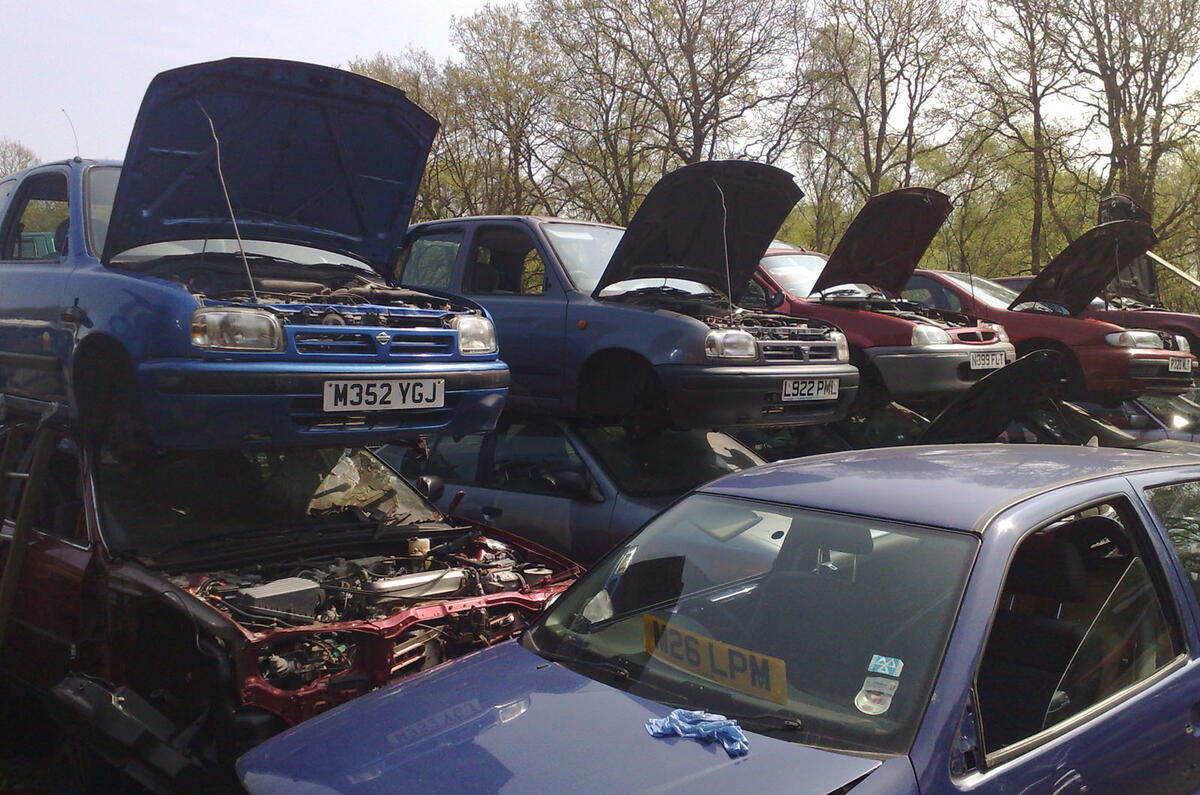
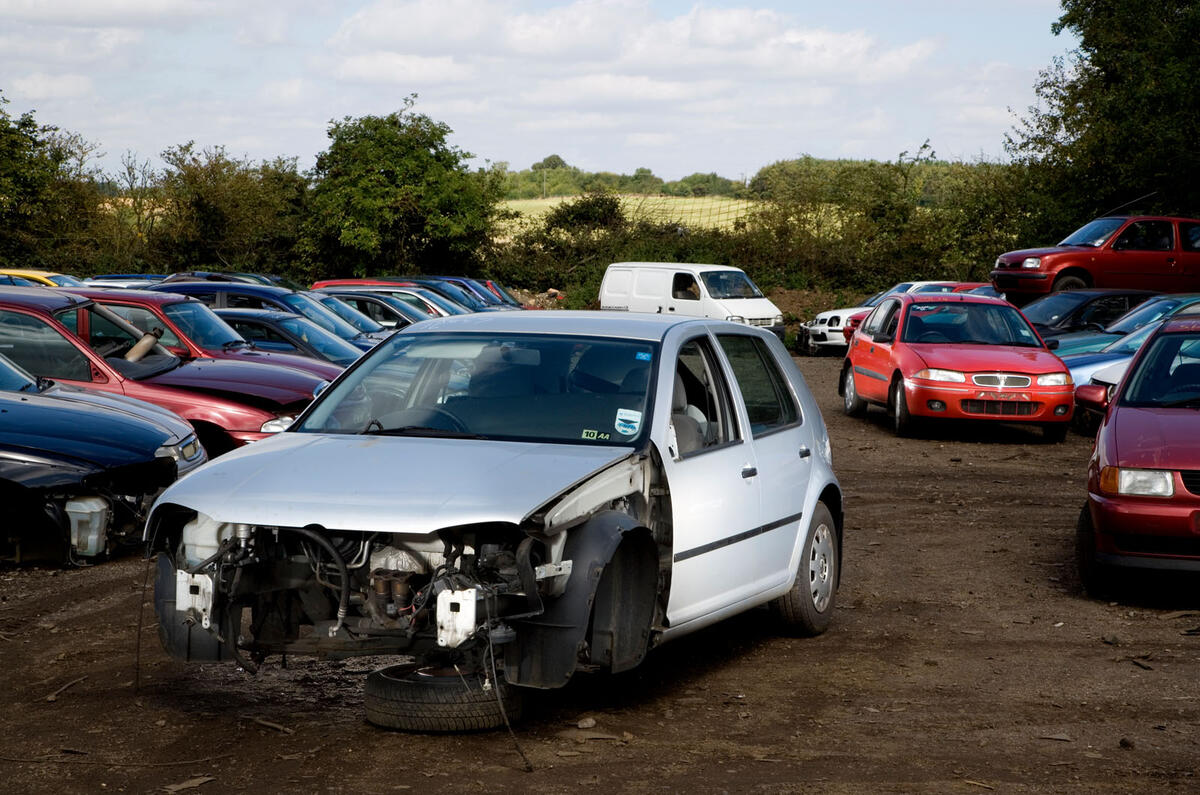















Join the debate
Add your comment
Pot calling the kettle black.
As ever plenty of people claiming waste and con etc.
You're in government and you are faced with a similar crisis in the car industry - tell us what your solution for a quick fix would be or would you have preferred to let businesses go to the wall?
The only con I saw was marketing going in to overdrive and dealers making out the buyer was receiving some special deal when in fact the same deal was always there, scrappage or not. Dealers would just pocket the extra money without passing the saving on to the customer. But whatever the negatives were, the objective was met - it got punters buying cars.
I do have to laugh at the idea of consumerism being a bad thing tho - it's that very same consumerism that drives publications like Autocar which you've taken the time to read and comment on.
scotty5 wrote:
Brexit will be much worse for UK manufacturing, yet you think that’s a great idea? Go figure.
UK did not recover from the financial crash by importing 40k Hyundais from S Korea. That is a total fallacy.
Successful economies create wealth. That is the key.
The full horror...
...of the government folly can be seen on you tube from a drone perspective, someone seems to have had the parts from some rarities, some "classics" and oddities such as several 6 wheel drive range rovers etc. Well worth watching for a car enthusiasts.
Found them
My parents both bought one and I have found their scrappers on the list.